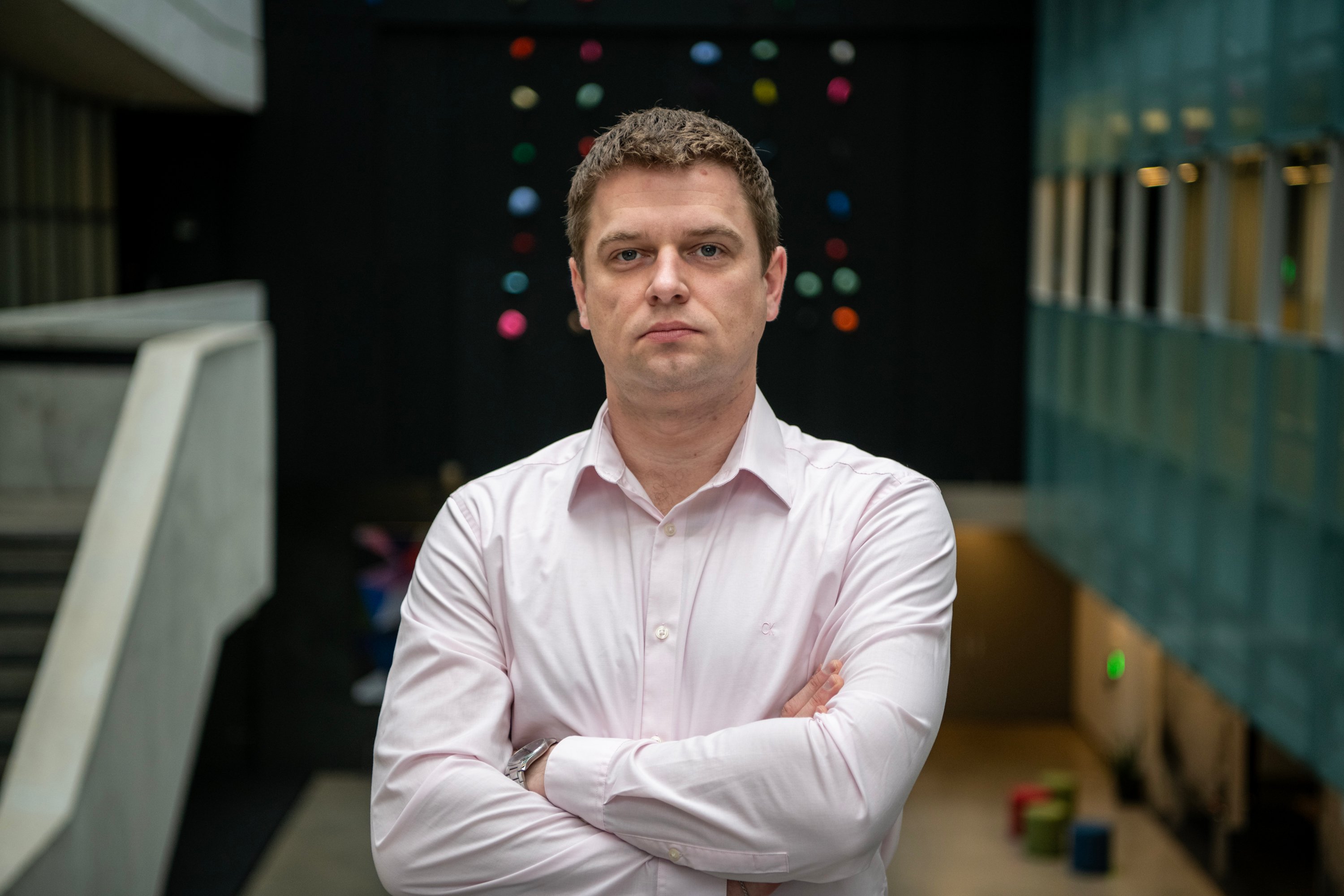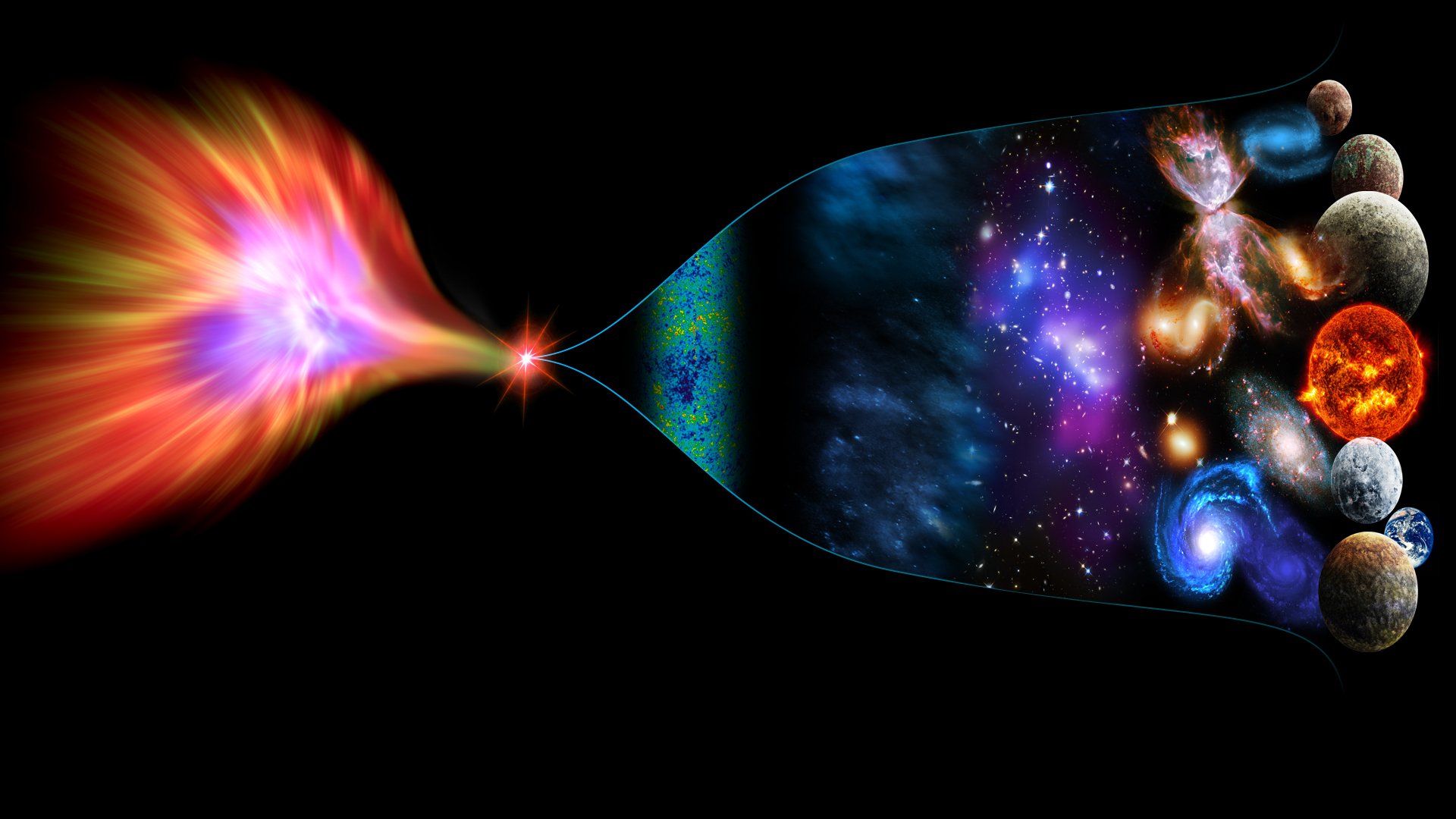Shortly after the big bang, before atoms even existed, the universe was a hot, dense soup teeming with particles of matter and antimatter in nearly equal measure. The subatomic particles existed in mirrored pairs, identical except that their charge and parity were reversed. Electrons were mirrored by positrons, quarks by antiquarks, and so on.
Nowadays, however, most everything that has mass – planets, mountains, your toothbrush – is made of only matter. There are no significant, naturally occurring regions of antimatter anywhere in the universe. It’s one of the oldest mysteries in particle physics: Why does our universe seem to favour matter over antimatter? Scientists still don’t know why.
Tiny, basic antiparticles are however occasionally found in space, thanks to high-energy cosmic rays that collide and smash into particles in the mostly empty space of our galaxy. These collisions create simple antiparticles, but they are fleeting and they don’t amount to much before they fade away. Similarly, scientists can create antimatter artificially by colliding subatomic particles using advanced tools like high-energy particle accelerators.
Antimatter found in cosmic rays is being studied at the International Space Station (ISS) with the Alpha Magnetic Spectrometer (AMS-02). Of the billions of cosmic-ray events AMS has collected and analyzed, many elementary or simple antimatter particles, such as positrons and antiprotons, have been identified. But AMS researchers have also verbally reported that they have recorded approximately 10 events that are consistent with something unexpected and puzzling: it’s possible, but not confirmed, that AMS researchers may have found rare forms of antimatter – antihelium-3 and antihelium-4 – in the wild.
The significance of antihelium
Michael Fedderke, a postdoctoral researcher at Perimeter, is one of many researchers who have been following statements the AMS collaboration has made over a number of years in public scientific talks about the possible existence of antihelium cosmic rays. Even though these statements are not published or peer-reviewed, Fedderke says that the verbal reports of potential antihelium-3 and antihelium-4 events are nevertheless worth thinking about very carefully: if the results are ultimately confirmed, it is extremely challenging to explain them within the Standard Model of particle physics (the extraordinarily successful theory of how particles behave).
To create antihelium, two antiprotons and either one or two antineutrons must combine to form antihelium-3 or antihelium-4, respectively. But the antinucleons produced fleetingly in cosmic-ray collisions are usually produced far too sparsely and are moving much too quickly to make this process efficient. As a result, it’s more likely that they simply blast off into space instead of producing antihelium-3, and it’s even less likely that they form the more complex antihelium-4.
“These preliminary results are so puzzling because there really isn’t a good explanation within the Standard Model for why you would ever see antihelium-4,” Fedderke says. “I don’t think any existing models can get the abundance of antihelium-4 that these preliminary results suggest out of just 10 tentatively identified antihelium cosmic-ray events overall.”
And that is not the only thorny issue presented by the preliminary AMS results. As Fedderke puts it, “Even if the constituent antinucleons are somehow made to move slowly with respect to each other so they can stick together more easily, the AMS antihelium candidates are moving at nearly the speed of light when they hit the detector. Figuring out how to make things moving slowly relative to each other merge into something that is moving fast relative to a distant detector is one of the cruxes of the challenge.”
How it may have happened: Fireballs
Fedderke is co-author of a paper in the journal Physical Review D that theorizes how antihelium-3 and -4 may be found in space. The team’s theory, fireball antinucleosynthesis, has two parts.
First, there’s a more speculative part involving dark matter. Fedderke says the team imagines some very big composite dark-matter states, which occasionally collide in our galaxy. When they do, the team posits that they convert a small fraction of their mass energy into energetic Standard Model antiparticles. These, he says, would be the ‘seeds’ of a fireball.
“In the model we’re working with, basic estimates show that these hypothetical big dark-matter states would collide often enough to be plausible sites to seed fireballs at sufficient rates for our story to hang together. It’s also plausible that dark-matter collisions could lead to this kind of conversion into Standard Model antiparticles,” Fedderke says.
The second part of the theory, which relies only on well-established physics, involves the development of these energetic seeds into a very hot and dense plasma with a high amount of energy and thermal pressure: the fireball itself. As this fireball expands, it accelerates and develops into a thin shell of plasma that expands into space relativistically (nearly at the speed of light). Expansion leads to a drop in temperature inside the plasma shell, and that’s when the real magic unfolds.
Sound familiar? That’s because the second part of the theory has echoes of a miniature big bang. Fedderke says there are some very close mathematical parallels.
“Something akin to the nucleosynthesis that took place in the early universe starts happening inside this cooling plasma shell,” says Fedderke. “Remember, we set this situation up so that this plasma shell contains a dense collection of mostly antiparticles. And, from the perspective of any given antiparticle inside the shell, all of its many neighbours are moving quite slowly relative to it. This gives them enough time to join up and form more complex antinuclei like antihelium before the plasma dissipates. And the really neat thing is that any antihelium nuclei born this way are entrained with the expanding plasma shell, so they eventually get flung out into space near the speed of light, exactly as required. Two birds; one stone. For appropriate fireball setups, we can even get the ratio of antihelium-3 to antihelium-4 right.”
What happens next?
The AMS collaboration is taking great care to check whether what they have seen is indeed antihelium-3 and -4, and not some experimental artifact. There are also other upcoming experiments that might supply independent checks, such as the balloon-borne General AntiParticle Spectrometer (GAPS) mission. Fedderke also sees a continued role for more theoretical work while we wait for more definitive experimental results.
“We can say two things from our study. First, our main point is that the appropriately seeded fireballs have well-understood dynamics that could generate antihelium with the right properties to explain the tentative AMS reports. Second, we showed that collisions of hypothetical big dark-matter states would be common enough to act as a plausible site to seed those fireballs. But we left a gap in the middle that needs more work: how exactly those collisions would seed fireballs with the right properties,” Fedderke says. “What we can do as theorists, while we wait for further data, is to try and understand better whether or not there’s a viable detailed model. If the results are confirmed, it would be additional motivation to go back and flesh out that missing link.”
About PI
Perimeter Institute is the world’s largest research hub devoted to theoretical physics. The independent Institute was founded in 1999 to foster breakthroughs in the fundamental understanding of our universe, from the smallest particles to the entire cosmos. Research at Perimeter is motivated by the understanding that fundamental science advances human knowledge and catalyzes innovation, and that today’s theoretical physics is tomorrow’s technology. Located in the Region of Waterloo, the not-for-profit Institute is a unique public-private endeavour, including the Governments of Ontario and Canada, that enables cutting-edge research, trains the next generation of scientific pioneers, and shares the power of physics through award-winning educational outreach and public engagement.


